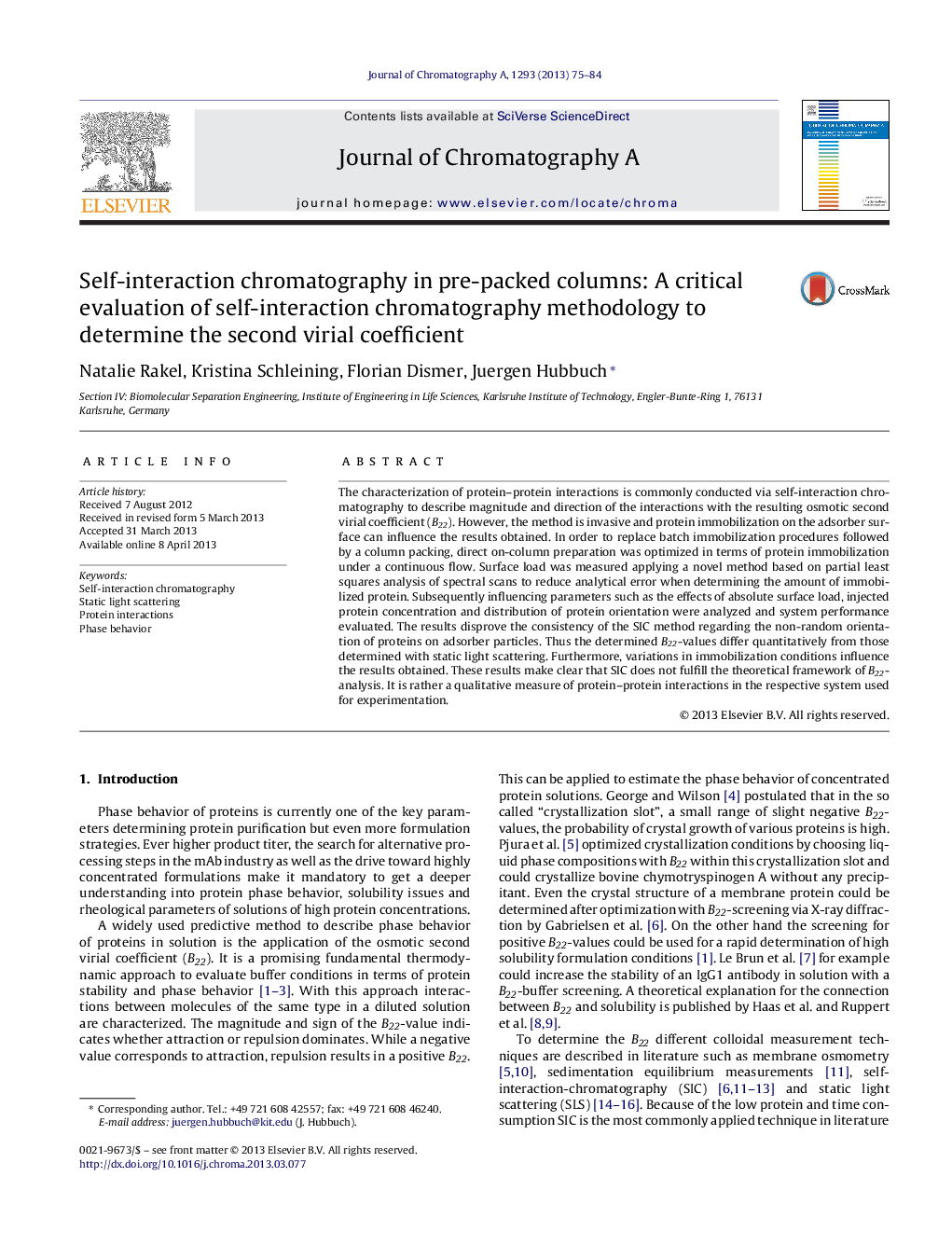| Article ID | Journal | Published Year | Pages | File Type |
|---|---|---|---|---|
| 1203947 | Journal of Chromatography A | 2013 | 10 Pages |
•Optimization of SIC by column preparation under continuous flow conditions.•Systematic evaluation of influencing parameters on SIC-results.•Quantification of immobilization influence on protein–protein interactions.•Confirmation of a non-randomized protein orientation after immobilization.•Comparison of SIC-results with literature and SLS-results.
The characterization of protein–protein interactions is commonly conducted via self-interaction chromatography to describe magnitude and direction of the interactions with the resulting osmotic second virial coefficient (B22). However, the method is invasive and protein immobilization on the adsorber surface can influence the results obtained. In order to replace batch immobilization procedures followed by a column packing, direct on-column preparation was optimized in terms of protein immobilization under a continuous flow. Surface load was measured applying a novel method based on partial least squares analysis of spectral scans to reduce analytical error when determining the amount of immobilized protein. Subsequently influencing parameters such as the effects of absolute surface load, injected protein concentration and distribution of protein orientation were analyzed and system performance evaluated. The results disprove the consistency of the SIC method regarding the non-random orientation of proteins on adsorber particles. Thus the determined B22-values differ quantitatively from those determined with static light scattering. Furthermore, variations in immobilization conditions influence the results obtained. These results make clear that SIC does not fulfill the theoretical framework of B22-analysis. It is rather a qualitative measure of protein–protein interactions in the respective system used for experimentation.
